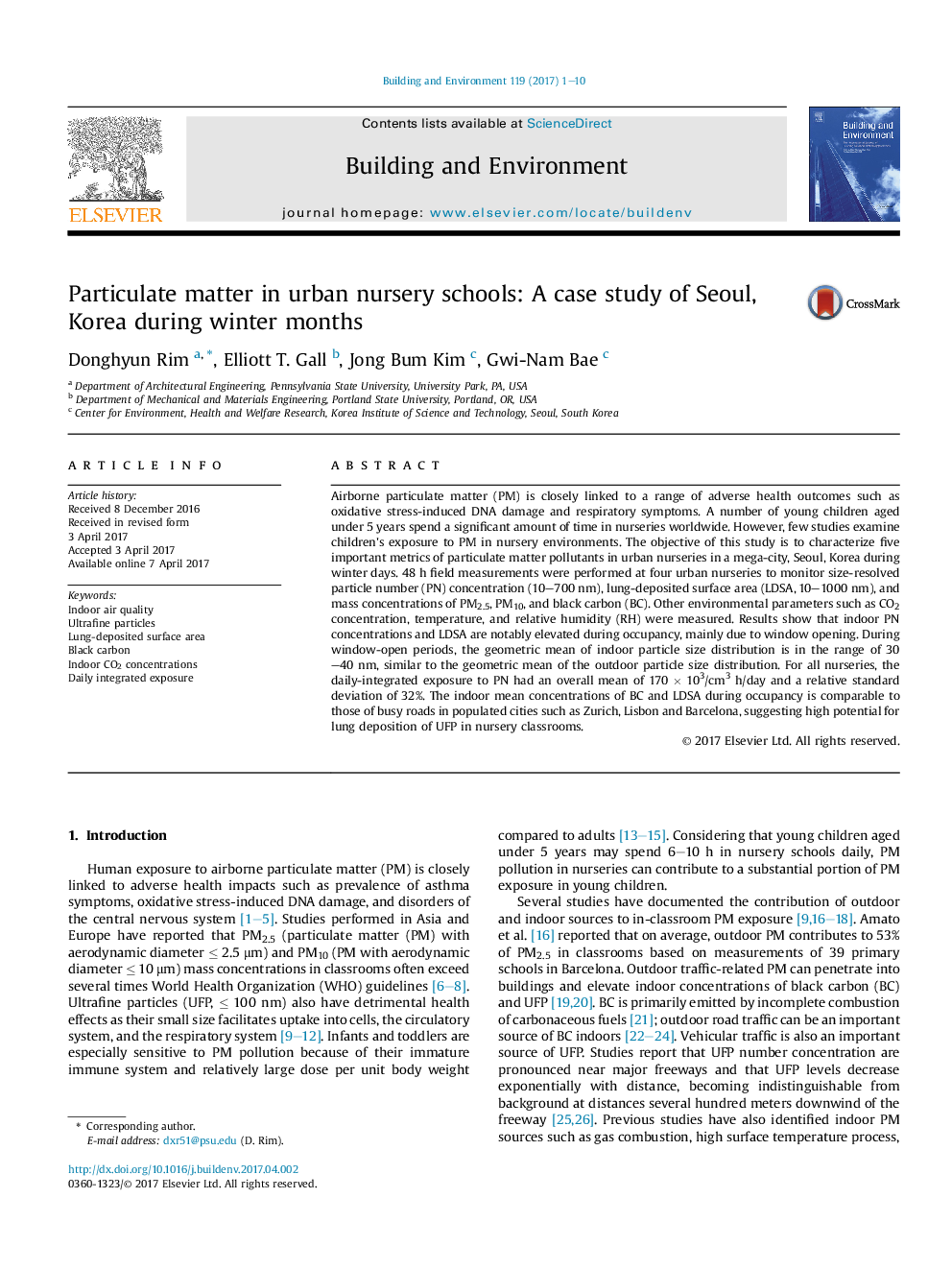| Article ID | Journal | Published Year | Pages | File Type |
|---|---|---|---|---|
| 4917330 | Building and Environment | 2017 | 10 Pages |
Abstract
Airborne particulate matter (PM) is closely linked to a range of adverse health outcomes such as oxidative stress-induced DNA damage and respiratory symptoms. A number of young children aged under 5 years spend a significant amount of time in nurseries worldwide. However, few studies examine children's exposure to PM in nursery environments. The objective of this study is to characterize five important metrics of particulate matter pollutants in urban nurseries in a mega-city, Seoul, Korea during winter days. 48Â h field measurements were performed at four urban nurseries to monitor size-resolved particle number (PN) concentration (10-700Â nm), lung-deposited surface area (LDSA, 10-1000Â nm), and mass concentrations of PM2.5, PM10, and black carbon (BC). Other environmental parameters such as CO2 concentration, temperature, and relative humidity (RH) were measured. Results show that indoor PN concentrations and LDSA are notably elevated during occupancy, mainly due to window opening. During window-open periods, the geometric mean of indoor particle size distribution is in the range of 30-40Â nm, similar to the geometric mean of the outdoor particle size distribution. For all nurseries, the daily-integrated exposure to PN had an overall mean of 170Â ÃÂ 103/cm3 h/day and a relative standard deviation of 32%. The indoor mean concentrations of BC and LDSA during occupancy is comparable to those of busy roads in populated cities such as Zurich, Lisbon and Barcelona, suggesting high potential for lung deposition of UFP in nursery classrooms.
Related Topics
Physical Sciences and Engineering
Energy
Renewable Energy, Sustainability and the Environment
Authors
Donghyun Rim, Elliott T. Gall, Jong Bum Kim, Gwi-Nam Bae,
